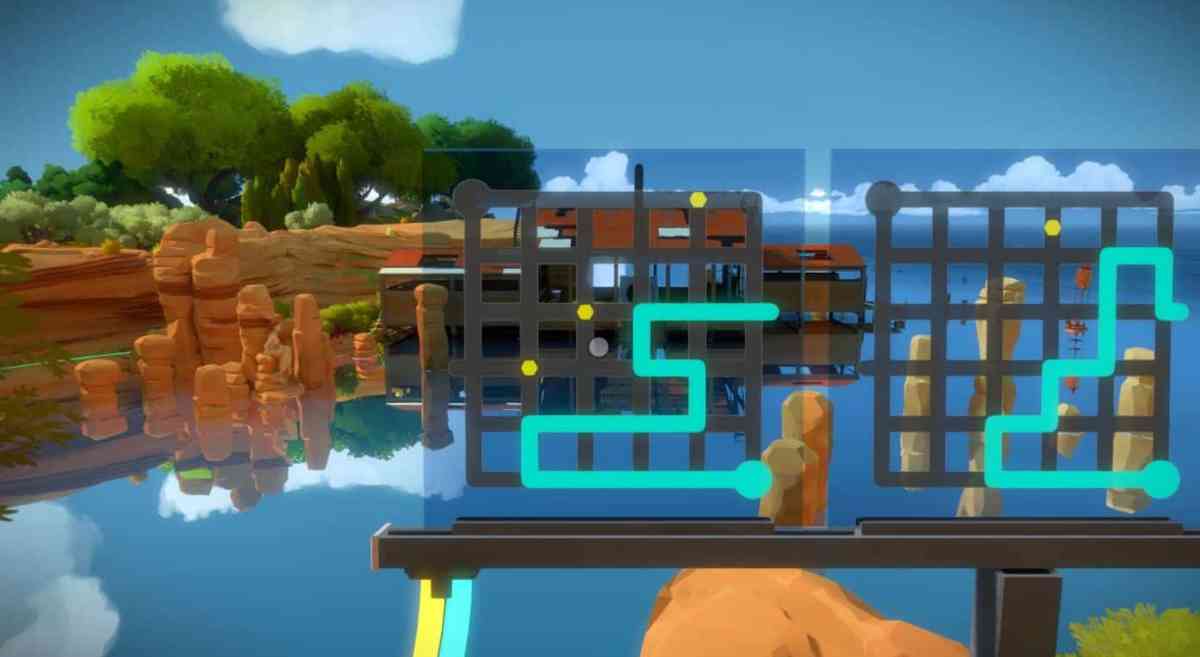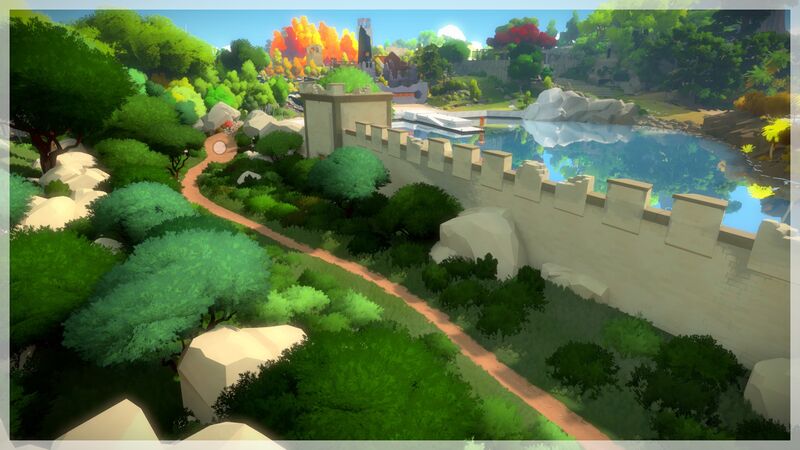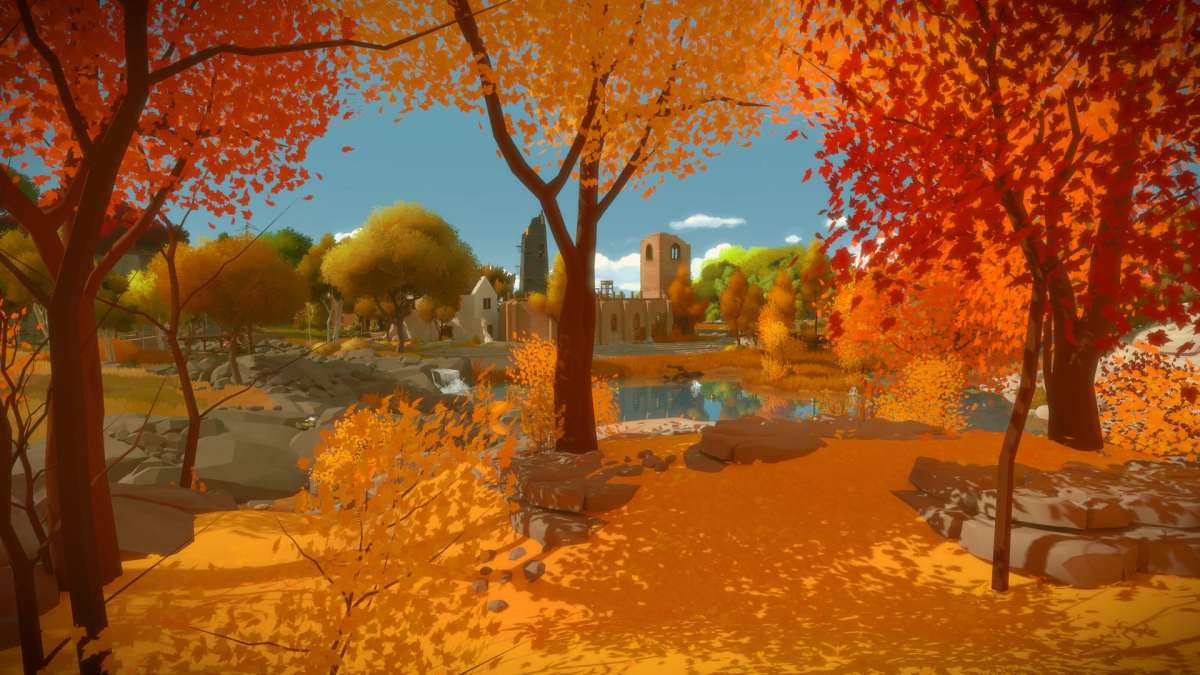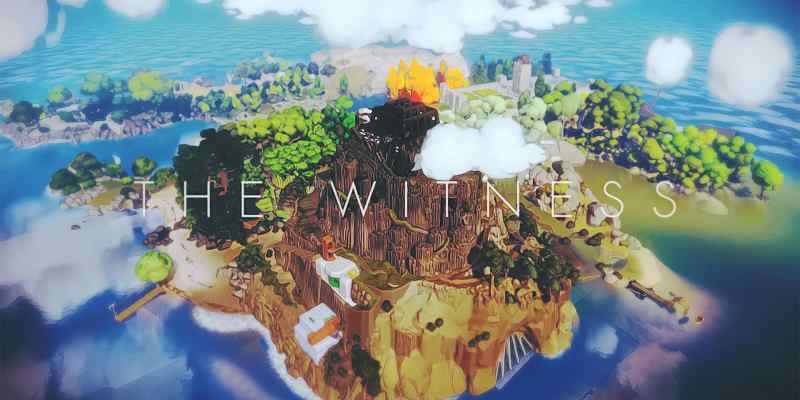Have you ever played a game that you just can’t stop thinking about? Even when you put down the controller and walk away from the screen, it seems to follow you around. You find yourself bringing it up in conversation, excited when you discover that somebody else has played it. And when you lay your head down at the end of the day and close your eyes, you see flickers of the game dancing in your mind before you fall asleep.
It’s been five years since Thekla’s The Witness came out on Jan. 26, 2016, and I haven’t stopped thinking about it since. It was the long-awaited follow up to Jonathan Blow’s wonderful Braid, which in itself was one of the early indie hits of the Xbox Live Arcade era. As a massive fan of Braid, I followed the development of The Witness for years leading up to its release. On its surface, it had a lot of stuff directed exactly at my tastes — a mysterious island to explore a la Myst, a bright and beautiful color palette, and the same quasi-pretentious philosophical musings of Braid that I actually quite liked.
However, upon finally having the opportunity to immerse myself in the game, it became clear it was so much more than the sum of its parts. The Witness gripped me tight with its world, puzzles, and mysteries — inside the game as well as out. And ever since its release, I’ve been searching for another puzzle game to come along and completely take over my life with the same spell that it did.
The Witness is a first-person puzzle exploration game set on a sprawling and colorful island filled with a dozen different unique and fantastical biomes. Once you get through the brief introductory section, you’re free to explore the island at your leisure — from its abandoned village, to winding hedge mazes, to desert ruins, to strange bunkers. Each area is packed with puzzle panels that lead towards powering up a large turret that fires a beam of light towards the top of the mountain at the center of the island. Ignite enough turrets, and the light eventually opens up the mountain, revealing the final area of the game.

The puzzles themselves start off fairly simple, asking you to draw a line from the beginning to the end of a maze. But once you branch out into the island proper, rules begin to be added to these scenarios. Small dots pepper the maze, and you have to make sure your line goes through each one before you hit the exit. Multicolored squares need to be segmented and separated by the lines that you draw. Tetris blocks force you to draw those specific tetromino shapes before exiting the maze — these are just three of the ever expanding rules that are relatively easy to wrap your head around.
First and foremost, the puzzles of The Witness are a language. The game begins by teaching you the basics of its nouns, verbs, and adjectives. But then it introduces grammar into the equation, forcing you to figure out how to combine the separate rules you’ve learned into fully functional sentences. It doesn’t straight up tell you any of these rules, instead trusting you to figure them out through context clues and the gradual building of puzzle difficulty. By the end, it genuinely felt like I had learned an alien language filled with colorful lines, segmented grids, and distinct patterns.
But the true magic of The Witness doesn’t fully kick in until you discover one of the countless puzzles that exist outside of the prescribed panels. Scattered throughout the island are environmental puzzles that take shape when viewed at just the right angle. I found my first one after I decided to head back to the opening area and see if there was anything I may have missed. I was able to climb up on top of a rampart and get a nice view of the island. It was here that I noticed a path along the ground bore a striking resemblance to the lines I’d been drawing to solve my panel puzzles. Sure enough, I clicked on the area that seemed like it would be a “starting point,” only to find that I was able to draw a line on the environment itself. From this point on, I was constantly viewing the island as a puzzle itself.

The Witness was also one of those rare single-player games that I played communally with pals. We never played it together or in the same room, but we were in a constant thread giving progress updates, theorizing about the mysteries, and venting our frustrations at tough puzzles in a form of group therapy. I’ve had this happen with other games — we’d relay our experiences and discoveries in the early days of The Legend of Zelda: Breath of the Wild and Red Dead Redemption 2. Or eagerly await until everybody’s rolled credits on God of War or The Last of Us Part II so that we could start talking about how we felt during specific story beats. But never has a puzzle game taken over our lives like The Witness did.
Everything in The Witness culminates in The Challenge, which is one of my favorite video game… uh… challenges of all time. Once you’ve mastered each of the rules and puzzle types and unlocked the mountain itself, you’re treated with the task of completing a series of algorithmically created puzzles that you have to complete under a strict time limit. I was reminded of just how good it is by The Last Jedi’s Rian Johnson tweeting about it a few months back.
Throughout The Challenge, Edvard Grieg’s iconic “In the Hall of the Mountain King” plays, growing to a manic intensity as your time dwindles down. I will forever associate the song with The Challenge, as well as the amazing scene in The Social Network where the Winklevoss twins compete in a crew match. And honestly, both of those things hold a special place in my heart.

More than any other puzzle game I’ve ever played, it felt like the mechanics of The Witness followed me out into the real world. I’d see line puzzles scattered about the architecture of San Francisco. I’d notice the unintentional patterns formed by certain objects. I’d slightly tilt my head to see things from a different angle. The only other time a puzzle game’s rules and mechanics bled into reality for me like this was after playing Catherine. For a brief period of time, any time I’d look at a towering structure, I’d mentally start to figure out which bits to pull out and push over in order to create a climbable path to the top. Luckily I never acted on this, and the effect wore off after a little while.
That’s not to say that there haven’t been incredible puzzle games since The Witness. Puzzlers like Gorogoa, Baba Is You, and Wilmot’s Warehouse have all caused me equal parts frustration and elation as I slammed against a wall I deemed to be impenetrable, only to eventually discover a door. Tetris Effect remains a synapse-firing interpretation of the iconic game. And games like Return of the Obra Dinn, Outer Wilds, and Telling Lies all did a wonderful job of melding story, atmosphere, and mechanics in a way that made me feel like a genuine detective.
But as much as I love them, and as much as they’re some of my favorite gaming experiences of the past few years, they simply haven’t consumed me in the same way as The Witness. It’s been five years since The Witness released, and not a day goes by where I don’t think about it in some way, shape, or form. And if that’s not the mark of a good game, I don’t know what is.
